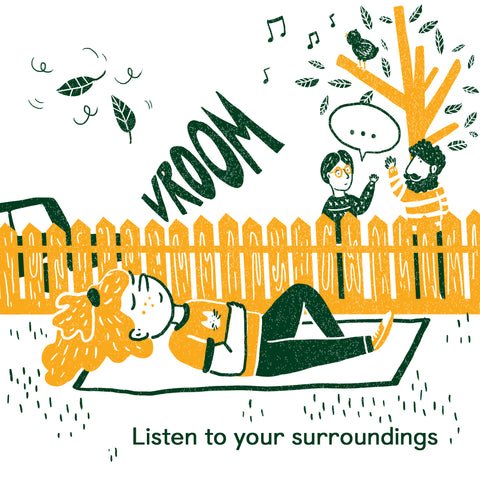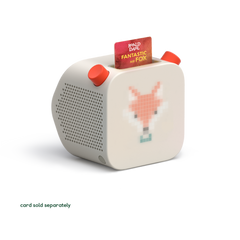5 Easy Mindfulness Activities for Kids
Mindfulness is a fantastic way for kids to focus their minds and quieten their thoughts, giving them self-sufficient tools to manage the ups and downs of day-to-day life.
But what is mindfulness, really? And how can you and your family begin to enjoy its benefits?
Put simply, mindfulness is awareness. When you're being mindful, you're taking a moment to connect in with your body or the world around you. You might be focusing on your breath, savouring the taste of a meal, or allowing the world to pass you by as you listen carefully. Mindfulness is non-judgemental, and promotes a positive mental attitude that will serve both you and your kids well.
Best of all, it's quick and easy to get started with mindfulness - even for little ones!
Here are a few suggestions for mindful exercises you and your kids can do together, and which only take a minute or two a day.
Visualise a happy place

This exercise encourages kids to use their imagination and engage with all of their senses. After a few slow, deep breaths, ask your child to picture themselves in a place which makes them feel relaxed and peaceful.
Maybe they're standing on a beach, feeling the sand between their toes and enjoying the sounds of seagulls and crashing waves, or they could be lying in some long grass and listening as a stream burbles softly beside them.
Have your child to think about what they can smell in this happy place, what they can touch, and how, even what they can taste - each of these senses unlocks a whole world of imagination and quiet, calming focus.
Continue breathing deeply as you each enjoy a happy place for a couple of minutes, and then carry that feeling with you for the rest of your day.
Listen to your surroundings

Mindful listening helps kids connect with the world around them while practicing their ability to focus. Have your kids sit or lie down in a comfortable place (the backyard is great!), close their eyes, and listen to the different sounds around them. Depending on where you are, there may be only a few sounds to pay attention to, or there might be lots!
Have them focus on each sound in particular and pay attention to what it's doing. You can guide them with your voice, drawing their attention to the sound of the birdsong, then to the passing conversation of two joggers, then to the sound of an airplane way up in the sky. By shifting their attention from one sound to another, kids will realise that noises appear more present as they focus on them, and fade into the background as they redirect their attention.
This exercise can be very relaxing, and it also teaches children how to train their attention and avoid distractions - great for improved focus in the classroom, or for better self control.
Draw your feelings

Mindful drawing helps children develop their emotional intelligence while giving them a creative outlet for self expression. Plus, using different artistic mediums - pens, crayons, chalk, paint - can be great sensory play and help little hands develop better fine motor skills!
Ask your children to draw how they feel at a certain time - it could be at the start of their day, or while talking through events in their day which made them feel happy, sad or confused. It's important not to attach too much importance to the "quality" of your child's drawing as this could create some pressure to do well.
Instead, prompt them to freely explore the abstract idea of an emotion. What colours will they choose to depict "happy"? Is angry better expressed through pens or through chalk? Is "confused" a round shape or a pointy one? Once they're done, you can have them talk you through their drawing and what it means to them.
The practice of mindful drawing together teaches kids that it's ok to express emotions, and gives them a constructive way for them to communicate their emotions to you.
Strike a warrior pose

This "warrior two" pose (known in Sanskrit as Virabhadrasana [veer-uh-buh-DRAHS-uh-nuh] Two) is a classic yoga pose which promote focus while also encouraging kids to take up space and feel confident in themselves.
- Have your kids stand up tall with their arms down beside them, palms facing forward, and inhale.
- On an exhale, they can step their right foot back, turning it out to face the side - the heel of their left (front) foot should be pointing directly towards the arch of their right (back) foot.
- Have them bend their left knee so that their shin is in a straight line, with their left knee directly above their left ankle. Their back leg stays straight.
- Lastly, they should extend their left arm out in front of them and their right arm out behind them, so that their arms are in a straight line. Their gaze should be over their left middle finger.
- From here, they can relax their shoulders, and focus on a strong tummy as they breathe gently in and out.
Breathe from your belly

Throughout all of the above exercises, we used deep breathing to connect in with our bodies and calm our minds. Here, kids will focus just on their breathing and the way it feels in their body, and like mindful listening, this will improve their selective focus and ability to tune out distraction.
Have your kids lie down on the floor or in the back yard and put their hands on their belly. Direct their attention to their stomach and have them notice how it raises up and down as they breathe in and out. As they deepen their breath, their belly will inflate like a balloon, and will deflate again as they breathe out.
To make this more fun, try introducing your kids' favourite toys! By placing a beloved teddy bear on their stomach, your kids will see the effect of their breathing as their furry friend moves up and down in time with their breath.
Mindfulness and Meditation on Yoto

If you'd like to explore some more mindfulness and meditation exercises, you can find some terrific audio titles in the Yoto Card Store! From guided meditations to stories and adventures, we have great audio to help kids start their days, focus their minds, and even drift off for a peaceful sleep.
Learn more here.
You can also find free kids mindfulness audio in the Yoto App, which is available on iOS and Android.


